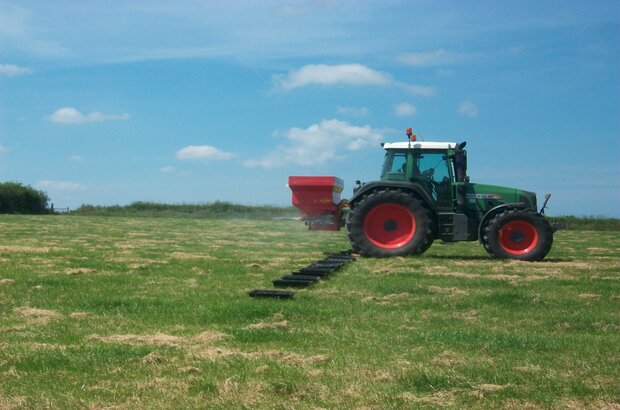
In this post, I'll provide an update on the work of the fertiliser roundtable, which recently held its first meeting. I’ll also share some analysis on the impact of varying fertiliser application rates to help reduce costs.
The Fertiliser Taskforce
In March, we blogged about some of the ways through which we’re supporting farmers in the face of increased fertiliser costs.
You might remember that one way was through the creation of a fertiliser roundtable. It's now known as the Fertiliser Taskforce.
Through the taskforce, government and industry will work together to improve market confidence and help provide farmers with the information needed to make business decisions on fertiliser use.
The first taskforce meeting was chaired by Minister Victoria Prentis.
New analysis on fertiliser application strategies
One member of the taskforce is the Agriculture and Horticulture Development Board (AHDB).
The AHDB shared its analysis of fertiliser buying and application strategies, which you might find helpful, so I'll share it in this post.
It explored 3 approaches:
- Applying at the usual economic recommended amount in 2022 and 2023
- Applying 75% of the typical application rate in harvest years 2022 and 2023
- Applying 50% of the typical application rate in harvest years 2022 and 2023
The right strategy will depend on the attitude to risk to yields, and where you feel fertiliser and grain prices will go over the next 18 months or so.
However, according to this scenario analysis, there is no significant difference between these expected common approaches.
So, whether fertiliser was purchased before the higher prices of late or not, some judicious reduction in application rates will pay off.
Further information
AHDB has created a new page bringing together information on how farmers can approach current high input costs, especially those working in the livestock and cereal sectors.
The page brings together information on adjusting nitrogen application rates and alternative fertiliser management options. It also includes useful fertiliser calculation adjustment tools for grassland and cereals and oilseeds.
AHDB also hosted a series of webinars advising on how to apply fertiliser when costs are high:
- Mitigating high fertiliser prices
- Fertiliser and nutrient application on grass
- Making the most of your muck
- Spring grain market outlook
The next Fertiliser Taskforce meeting will be chaired by Minister Jo Churchill. We’ll blog after the next meeting here on the blog, so do subscribe.
If you missed it, we recently blogged about the changes we’ve made to Basic Payment Scheme payments to help farmers plan around increased costs.



 The
The 
3 comments
Comment by barrie crowther posted on
To supplement manufactured fertilizer we need to be using a never ending source which is sewage. Modern techniques can take heavy metals and impurities out and make it very suitable as an organic manure. Instead of pouring millions of gallons into our rivers and seas water companies need to invest and sell this material back to farmers, Yours,
Comment by t posted on
the making the most of muck.is dated Nov 2021 and all rules now changed so very misleading to issue incorrect guidance.
Comment by The Team posted on
Hi Toby,
Thanks for getting in touch. You're right - the AHDB's webinar is from November, but we thought it would be helpful to share this with farmers as it goes through the nutrients in different manure types and best practice on storage, testing and application (and a lot of other useful information).
The most up-to-date guidance on applying the farming rules for water can be found on GOV.UK:
https://www.gov.uk/government/publications/applying-the-farming-rules-for-water/applying-the-farming-rules-for-water
Hope this is useful and thanks for visiting the blog.
The Team